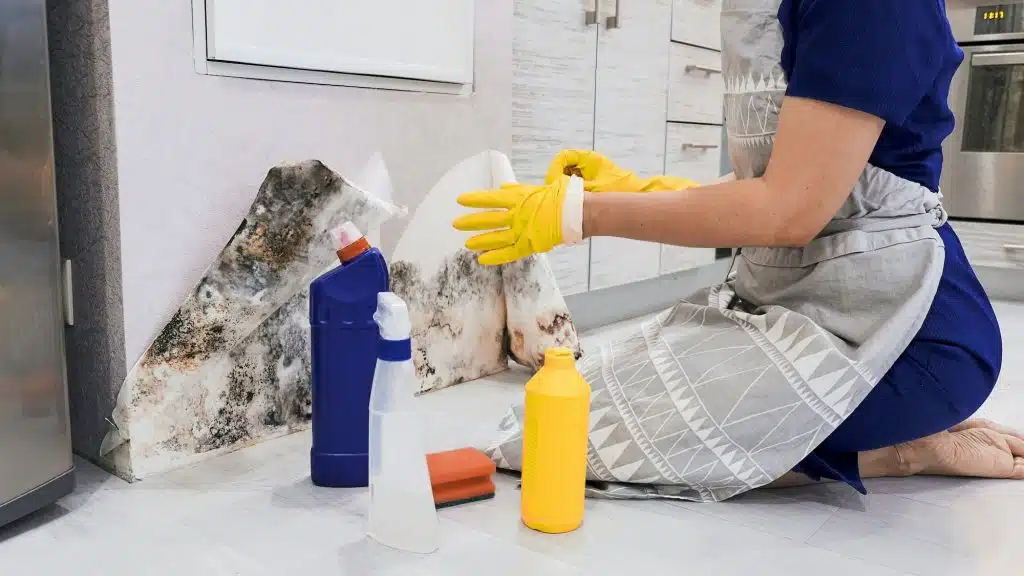How to Strip Paint Off Wood Easily and Effectively
If you have been wondering how to strip paint off wood easily and effectively, then you have come to the right place! Here we’ll tell you what you need to know, including the advantages and disadvantages of using a paint stripper, a sander, and a heat gun, as well as how to remove the residue left by the paint.
Paint stripper or heat gun?
If you’re looking for a quick and easy way to strip paint from wood, then a heat gun might be the best option. The device uses a stream of heated air to soften the paint and make it easier to scrape. It can be used both indoors and outdoors. However, it’s important to make sure you use it safely.
To start, ensure that you wear proper protective gear, including a respirator. This will protect you from the noxious fumes produced by the process.
You’ll want to check the manufacturer’s manual for more specific instructions. Also, make sure that you don’t hold your heat gun in one place for longer than a few seconds. Doing so can scorch the wood and char it.
When you’re ready to remove the old finish, you’ll want to sand it down to bare wood. This is a fairly simple process that will reveal the grain of the wood, as well as the molding profiles.
For a more thorough job, you can also apply a chemical paint stripper. Some of these are more expensive than their liquid counterparts, but they’re a good option for removing thick layers of paint.
There are many other methods you can try, from sanding with an electric sander to a pressure washer. Fortunately, these methods are not all that difficult to perform, and they are relatively inexpensive.
One of the best things about using a heat gun is that it can remove multiple layers of paint. Heat guns are especially useful for removing varnish.
When stripping paint, be sure to work in a well-ventilated area. It’s also a good idea to wrap your hands in a mask to prevent lead dust from building up.
The pros and cons of a heat gun
A heat gun can be a helpful tool when it comes to removing paint from wood. These tools are inexpensive and can be used for a wide variety of tasks. They are also safe to use. However, there are some things to keep in mind before you get started.
One of the most important things to remember when using a heat gun is to keep it away from your skin. If it gets too hot, it can scorch your skin. Also, never point the gun at your body. You can do this by holding it at an angle or by moving it around.
In order to maximize the performance of your tool, you must choose the right nozzle. This will depend on how many layers of paint you are trying to remove. For example, you may want to use a wider flare nozzle if you are trying to remove paint from a flat surface. On the other hand, you may want to use a narrower stair-stepped nozzle if you’re dealing with a complex molding.
If you’re unsure which nozzle to buy, you can always find a comparison chart online. Most of them will have similar features, but the quality of the nozzle will play a big role in how well you perform.
The best heat gun is a multi-purpose device. It can be used to remove paint, soften adhesives, and even shrink wrap. As long as you follow the instructions, you’re sure to have a successful job.
Heat guns are great for getting in to hard to reach places. That’s especially true if you have a smaller area to work with. But if you have a larger project, it’s better to stick to a liquid paint stripper or sanding tools.
The pros and cons of paint stripper
A paint stripper is a liquid that penetrates the surface of the wood and dissolves the bond between the wood and the old paint. This makes it easy to remove the old paint from your home’s furniture or other surfaces. However, there are some drawbacks to using this product.
Paint strippers contain a chemical that may be hazardous. For this reason, you should always use them in well-ventilated areas. You also need to wear protective clothing and a dust mask. Make sure you read all the information on the product before you begin.
Methylene chloride is the most common paint stripper on the market. It can be used for removing paint from metal, masonry and wood. If you choose to use it for your project, be sure to follow instructions and dispose of the stripper properly.
There are also several other types of paint strippers. Some are odor-free and biodegradable. Others are safer to use. Chemical strippers are less harsh on the wood than sanding. Mechanical strippers are more physically demanding.
One method of removing paint from wood is with heat. This method is not inexpensive and can lead to skin burns. To avoid burns, use a low setting. Do not hold the gun over the surface for long.
Another method is to apply the stripper to a piece of wood, and then peel it away. If you decide to use the peeling technique, be sure to protect your surfaces with a drop cloth. The plastic will prevent the stripper from drying out. Once the paint has been peeled off, you will be able to see the texture of the wood and the grain.
What removes residue after stripping paint?
When you strip paint off wood you will be left with a residue. You can clean the residue away using a scrub brush or a wet rag.
The first step is to sand the area. Sanding smooths the wood and removes the residual staining. To sand the wood, use a random orbital sander or multi-tool with a sanding head.
You can use a paint stripper to remove the remaining paint. Some people prefer to use vinegar. If you decide to use vinegar, you should wash the surface thoroughly with water and vinegar. Vinegar has acidic properties and can help to loosen the paint.
You can also try using lacquer thinner. Like mineral spirits, this will help to remove the paint. However, it is not advisable to use it in an open space as the fumes can cause respiratory problems.
Another option is to remove the paint with a brush and hot water. This method will only take a few minutes. After the paint has been removed, wipe the area down with a dry rag.
For larger areas, you can use a pressure washer to remove the paint. Make sure you hold the nozzle at least 15-18 inches away from the surface.
You can then scrape the residue off the wood. If there are still some areas that are not removing, you can use a wire brush to scrape the paint.
You can also apply a coating of Peel Away. This is designed to remove up to 30 layers of paint and will work well with paper covers.
Using a paint stripper can be tedious and time-consuming. In order to speed up the process, you can attach a metal brush to a cordless drill.
Should I use a sander to strip paint off wood?
When you want to paint your furniture, you need to first remove the old paint. However, removing old paint can be a time-consuming and messy process. Here are some techniques to help you get rid of that unwanted paint.
One technique is to use a sander. You can purchase a handheld sander or an orbital sander. Orbital sanders are much larger, but they are more difficult to control. The best orbital sanders will remove paint quickly.
Another option is to use a heat gun. This can be a safe, inexpensive way to strip paint from wood. But remember, you must use a sander or heat gun in a well-ventilated area. If you do not, you may burn the wood or increase the harmful vapors.
Before using a sander or heat gun to remove paint, you must first test the surface to make sure it is free of lead. You can do this by using a DIY lead paint testing kit. They come in two varieties: sulfide-based and rhodizonate-based.
After removing paint with the sander or heat gun, you should wipe the surface down with a cloth and a little detergent. Once you’ve cleaned the surface, you should wait for the paint to dissolve. To avoid damaging your wood, you should wear disposable booties.
Finally, you’ll need a scraper. A metal putty knife will work well to scrape off layers of paint. Alternatively, you can use a plastic scraper. Using a scraper will also allow you to get rid of splatters and drips of paint.
When removing paint, you should also test the surface for wet rot. Symptoms of wet rot include large cracks and warping.



